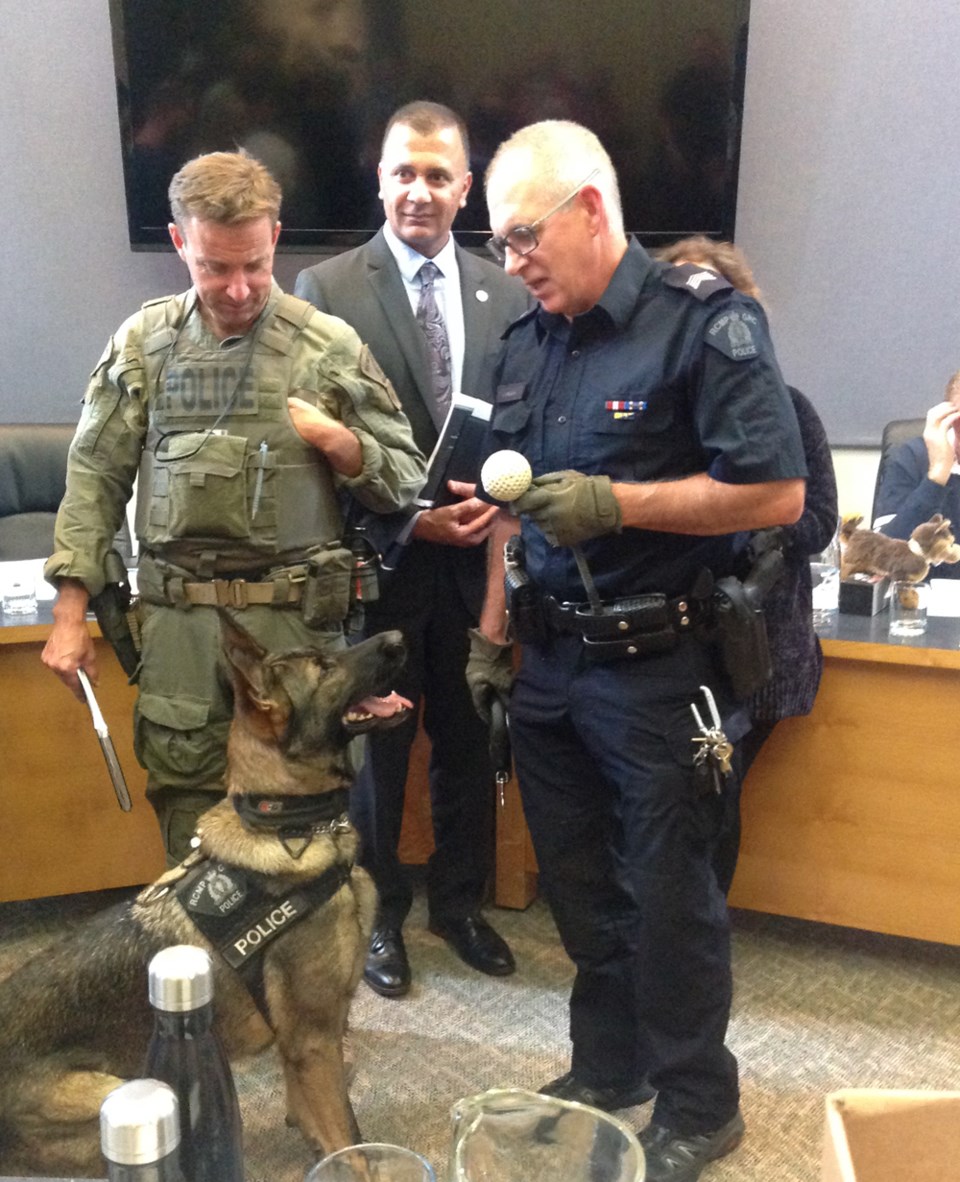Local government leaders on the Sunshine Coast spent a couple of hours last week learning about the RCMP Lower Mainland District’s involvement in the integrated policing teams, which account for about 10 per cent of the local detachment budget.
Chief superintendent Brian Edwards, who took over as officer in charge of the Integrated Teams in July, appeared before Sechelt council’s committee of the whole Sept. 11 along with the heads of several of the teams, including the Integrated Homicide Investigation Team (IHIT), the Integrated Forensic Identification Service (IFIS), and the Emergency Response Team (ERT).
Sunshine Coast Regional District (SCRD) board members as well as representatives from Gibsons and School District No. 46 were also on hand for the presentation.
Among the stats presented at the meeting was the fact that IFIS was involved in 48 cases on the Coast in the 2018-19 fiscal year, which included helping identify seven suspects in break-and-enter and stolen vehicle investigations through fingerprints and using a “footwear impression” to help make an arrest in a boat theft. Since April 1, IFIS has been called in for about two dozen investigations.
The committee also heard that an Aug. 19 homicide in Halfmoon Bay was just one of four local cases IHIT has been involved in since it formed in 2003.
Supt. Dave Chauhan said it was typical of what he described as a conventional homicide investigation, with a group of six“highly trained, highly skilled” IHIT members assigned to the case, working closely with two specialists from IFIS.
After the presentation, the local government reps had questions about cost, the potential impact of Surrey creating its own municipal police force, and how being ferry-dependent affects the response times of the teams.
The District of Sechelt is the only local jurisdiction that pays policing costs directly, and last fiscal year its share of the Integrated Teams budget was about $159,000.
Taxpayers in Gibsons and the SCRD contributed part of $12.2 million that came from the province.
Edwards said the cost for municipalities is based on a formula that uses population and a five-year average of crime rates, and that Sechelt’s $159,000 works out to a little less than the cost of hiring one full-time officer for the detachment.
Some of the larger RCMP-serviced municipalities in the Island and Lower Mainland Districts, including Squamish, have raised concerns about the financial impact of the City of Surrey shifting to a municipal police force.
Sechelt Coun. Alton Toth asked how Surrey’s plan would affect Sechelt’s share of the Integrated Teams budget.
Edwards said the Integrated Teams, which also provide service to municipalities with their own police forces, such as West Vancouver and Abbotsford, could end up having the same relationship with Surrey.
“In the model that was made public by the City of Surrey, the recommendation was to remain within the Integrated Teams,” Edwards said. “We’ll roll with the punches on that and I’m satisfied there won’t be any service interruption to municipalities we serve.”
Gibsons Mayor Bill Beamish wanted to know how the town eventually passing the 5,000 population mark and having to pay directly for policing would change the overall contribution from the Sunshine Coast.
“As a free-standing detachment within the Lower Mainland we would expect [Gibsons] to contribute to the Integrated Teams,” Edwards said. “It wouldn’t reduce the overall cost, because the Sunshine Coast has to pay X to receive those services, but what it would do is reduce the contribution of the provincial government, which would be covered by the municipality [of Gibsons].”
The question around how the Integrated Teams get to the Coast in critical situations came out of a comment Insp. Andy LeClair, head of the Emergency Response Team, made comparing the Sunshine Coast to Boston Bar, which is also in the team’s jurisdiction.
“We can just drive on the ferry and be over here in 40 minutes,” LeClair said, which got a lot of laughs in the room.
Sechelt Mayor Darnelda Siegers asked if the Integrated Teams, especially ones with a lot of gear like ERT, do just take the ferry or whether there are other arrangements.
Edwards said he wasn’t able to discuss details of response times, or protocols for getting officers to a scene in a public forum. “I wouldn’t want to give an advantage to anybody in terms of our ability to get over here,” he explained. “We have access to air services… We also have watercraft. We have our own watercraft and we have protocols in place with other agencies. We will get members here when needed.”



